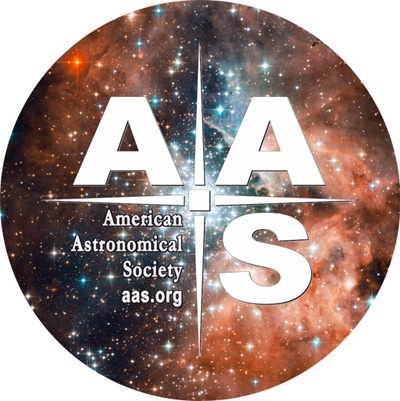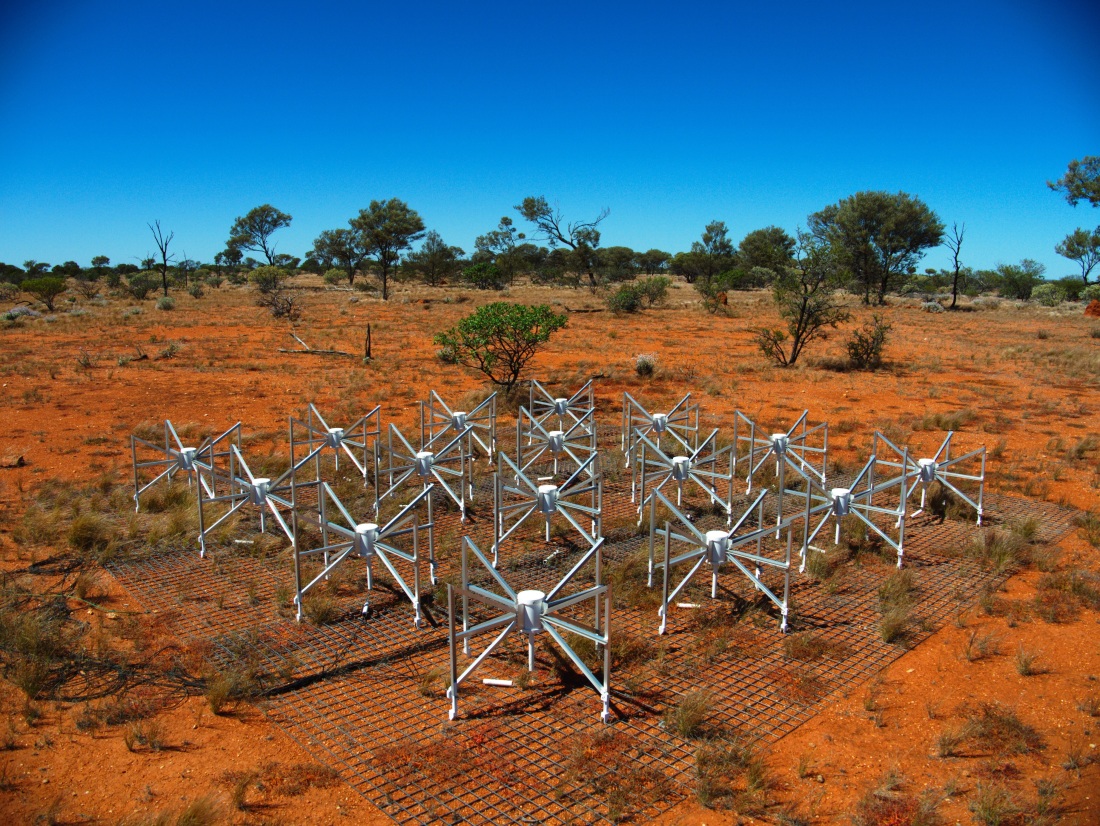
via
29 January 2020
Susanna Kohler

The Australian Square Kilometre Array Pathfinder (ASKAP) radio telescope is responsible for finding a number of fast radio bursts. But could there be fainter flashes that it’s missing? [CSIRO/Alex Cherney]
New evidence deepens the mystery of fast radio bursts (FRBs), the brief flashes of radio emission stemming from unknown sources beyond our galaxy. Scientists have now discovered faint repeat bursts from one of the brightest FRBs, previously thought to have been a one-off event.
To Repeat or Not to Repeat
It was over a decade ago that scientists noticed the first enigmatic, millisecond-duration burst of radio waves from outside of the Milky Way. Since then, we’ve discovered about 100 FRB sources and even identified the host galaxies for several of them. Nonetheless, we still don’t know what causes FRBs, or even whether they’re all the same type of phenomenon.

FRB 121102, the first fast radio burst found to repeat, was also the first to be localized in the sky. [Gemini Observatory/AURA/NSF/NRC]

FRB properties span a wide range, but one of the biggest distinguishing features has been repetition. While most discovered FRBs have been one-off events — a single bright flash and no evidence of any additional emission from the same region either before or after — around ten FRBs have been found to repeat.
We successfully localized one repeating FRB to a distant low-mass, low-metallicity dwarf galaxy. The two non-repeating bursts that we’ve localized, on the other hand, are associated with very massive host galaxies. Does this distinction mean that repeating and non-repeating bursts make up two different classes of FRBs? Or are FRBs all the same type of source, and the difference in host galaxies is just random variation?
Recently, a team of scientists led by Pravir Kumar (Swinburne University of Technology, Australia) has added one more clue to the puzzle: observations of weak repeat bursts from an FRB thought to be non-repeating.

Artist’s impression of the ASKAP radio telescope finding a fast radio burst. Other observatories are shown joining in follow-up observations. [CSIRO/Andrew Howells]
What Are We Missing?
Kumar and collaborators were testing a simple theory: What if FRBs all repeat, but we don’t have the sensitivity to detect the fainter bursts?
In this scenario, supposed one-off FRBs are actually just the most energetic bursts from repeating sources. If we carefully study very sensitive observations of the region around a non-repeating burst, the team reasoned, we might find evidence of other bursts from the same source.
The authors chose FRB 171019 as their target — one of the brightest bursts found in a recent survey conducted with the Australian Square Kilometre Array Pathfinder (ASKAP). Kumar and collaborators used ASKAP itself, as well as the 64-meter Parkes radio telescope and the 110-meter Green Bank Telescope, to conduct follow-up observations of the 10’ x 10’ region FRB 171019 was determined to have originated from.



Timeline of the ASKAP, Parkes, and Green Bank Telescope observations in the direction of FRB 171019. Red circles mark observed bursts. [Kumar et al. 2019]
Faint Flashes Found
Though no additional bursts were found in the follow-up ASKAP or Parkes data, two faint bursts were visible in the 820 MHz Green Bank Telescope data, occurring 9 and 20 months after the initial ASKAP burst detection. The inferred distances are consistent with that of FRB 171019, but they are a whopping factor of ~590 fainter than the original burst!
This discovery lends credence to the idea that more seemingly one-off bright FRBs may actually have faint repetitions that we’ve simply missed — and these sources may be found to repeat if we conduct follow-up with more sensitive telescopes. Understanding this brings us one step closer to discovering the nature of these mysterious sources.
Citation
“Faint Repetitions from a Bright Fast Radio Burst Source,” Pravir Kumar et al 2019 ApJL 887 L30.
https://iopscience.iop.org/article/10.3847/2041-8213/ab5b08
See the full article here .

five-ways-keep-your-child-safe-school-shootings
Please help promote STEM in your local schools.

AAS Mission and Vision Statement
The mission of the American Astronomical Society is to enhance and share humanity’s scientific understanding of the Universe.
The Society, through its publications, disseminates and archives the results of astronomical research. The Society also communicates and explains our understanding of the universe to the public.
The Society facilitates and strengthens the interactions among members through professional meetings and other means. The Society supports member divisions representing specialized research and astronomical interests.
The Society represents the goals of its community of members to the nation and the world. The Society also works with other scientific and educational societies to promote the advancement of science.
The Society, through its members, trains, mentors and supports the next generation of astronomers. The Society supports and promotes increased participation of historically underrepresented groups in astronomy.
The Society assists its members to develop their skills in the fields of education and public outreach at all levels. The Society promotes broad interest in astronomy, which enhances science literacy and leads many to careers in science and engineering.
Adopted June 7, 2009
About SKA
The Square Kilometre Arraywill be the world’s largest and most sensitive radio telescope. The total collecting area will be approximately one square kilometre giving 50 times the sensitivity, and 10 000 times the survey speed, of the best current-day telescopes. The SKA will be built in Southern Africa and in Australia. Thousands of receptors will extend to distances of 3 000 km from the central regions. The SKA will address fundamental unanswered questions about our Universe including how the first stars and galaxies formed after the Big Bang, how dark energy is accelerating the expansion of the Universe, the role of magnetism in the cosmos, the nature of gravity, and the search for life beyond Earth. Construction of phase one of the SKA is scheduled to start in 2016. The SKA Organisation, with its headquarters at Jodrell Bank Observatory, near Manchester, UK, was established in December 2011 as a not-for-profit company in order to formalise relationships between the international partners and centralise the leadership of the project.
The Square Kilometre Array (SKA) project is an international effort to build the world’s largest radio telescope, led by SKA Organisation. The SKA will conduct transformational science to improve our understanding of the Universe and the laws of fundamental physics, monitoring the sky in unprecedented detail and mapping it hundreds of times faster than any current facility.
Already supported by 10 member countries – Australia, Canada, China, India, Italy, New Zealand, South Africa, Sweden, The Netherlands and the United Kingdom – SKA Organisation has brought together some of the world’s finest scientists, engineers and policy makers and more than 100 companies and research institutions across 20 countries in the design and development of the telescope. Construction of the SKA is set to start in 2018, with early science observations in 2020.


SKA Meerkat Telescope

SKA Murchison Wide Field Array




